- Home
- Travel In China > China Culture > Chinese Symbols >
Chinese Silk
As one of the symbols of China, Silk, a sort of textiles, is made from cocoon fiber, synthetic fiber or artificial fiber. Silk is the specialty of China as well as the essential component of Chinese culture. Silk is light, soft and highly malleable. Han people invented and produced largely silk articles and made the first East-West trade exchange of silk, called “Silk Road” in history.
History of Chinese Silk
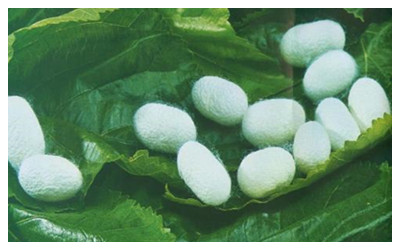
Chinese people invented and produced largely silk articles and made the first East-West trade exchange of silk, called “silk road” in history. Since Han Dynasty, Chinese silk was constantly shipped abroad in large numbers. It is well-known as one part of Chinese culture.
The earliest silk was discovered about 5,300 years ago, in Dawenkou culture period, which was found in 1958 by Chinese scientist. China is the earliest state to keep silkworm. According to the record, in the mid-Neolithic period, about 6,000 years ago, China began to feed silkworms and weave pongee. In Shang Dynasty, silk production began to take shape and had complicated weaving machine and high technique.
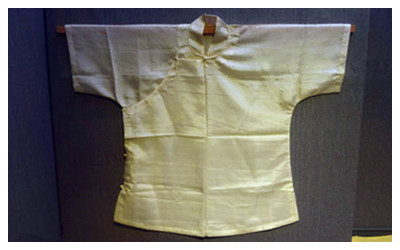
Along with the economic development of Qin and Han Dynasties, silk production reached a peak. The varieties of silk are divided into tought silk, damask and brocade. The emergence of brocade is an important milestone in the history of Chinese silk.
Tang Dynasty was a period of great prosperity of silk production. The production organization of silk was divided into court handicraft, rural sideline and independent handicraft. Meanwhile, the foreign trade of silk had also developed greatly, which made great contribution to prosper of Tang Dynasty. Song brocade, filament and gilding fabric are three special variety emerged in Song Dynasty.
In Ming and Qing Dynasties, the oversea trade of silk developed rapidly as a result of the emergence of development of capitalism. A group of typical professional silk town came into being. It is the most active period as for silk.
Homerowns of Chinese Silk
Huzhou Silk
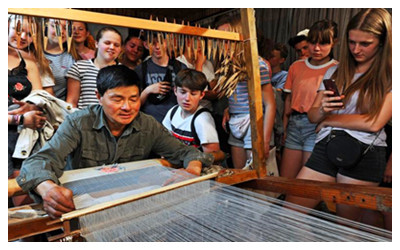
Huzhou city, Zhejiang province is the real hometown of silk which has been forgotten. Huzhou silk has a long history which can be traced back to 4,700 ago. In 1958, a number of thread and no carbonous tough silk were unearthed in southern suburb of Huzhou, which were proved to be the earliest silk textile with a history of over 4,700 years. The discovery made Huzhou as the oldest god of longevity of silk in the world.
From Spring and Autumn and Warring States to the Northern and Southern Dynasties, Huzhou silk exported more than 10 countries. In Tang Dynasty, the real staring point of silk road was Huzhou. In Song and Yuan Dynasty, the graftage of mulberry got prevailing in Huzhou which improved the output and quality concoon fibre. In Ming Dynasty, areas surrounding Huzhou including Suzhou, Wuxi, Hangzhou, and so on , villagers operated in textile industry. In Qing Dynasty, the output of Linghu town, subordinate of Huzhou city equal to the output of Hangzhou, Jiaxing, and Suzhou.
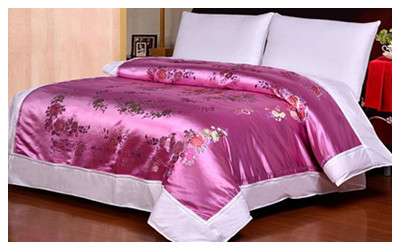
Huzhou is the earliest birthplace of silk and the oldest starting point of Silk Road. From ancient times, silk has become the important source of subsistence and the local pillar of the economy. In 2010 Shanghai World Expo, 60 silk national treasure such as the bilingual version Tao Te Ching made from silk, silk textile Dwelling in the Fuchun Mountains, etc. took foreigners’ breath away in astonishment.
Hangzhou Silk
Hangzhou silk always occupied important position in the Han traditional textile industry. The unearthed textile with a history of more than 4,700 year has revealed the long history of Hangzhou silk. Hangzhou silk features soft texture, beautiful color and great varieties.
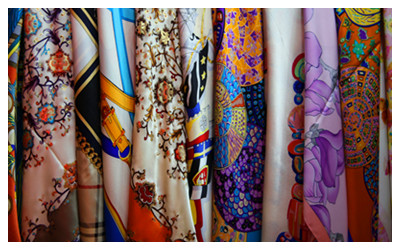 Suzhou Silk
Suzhou Silk
Ancient cultural city of Suzhou is not only a garden city but also the city of silk. In Tang and Song Dynasty, Suzhou was the silk center of the whole nation. In Ming and Qing Dynasties, the royal high textiles were mostly from Suzhou. The 10 years’ production of Suzhou silk can go around the earth for 45 circles.
Shengze Silk
Shengze town(盛泽镇), situated in the south end of Jiangsu province, is the important production basement of silk textile. The temperate climate and plenty of rainfall are suitable for silkworm keeping. Shengze silk won prizes frequently and is highly praised at home and abroad.
Where & How to buy Chinese SIlk?
Silk is a symbol of Chinese ancient culture. Chinese old silk industry woven and embroidered glory history for Chinese art and culture, making an indelible contribution towards development of human civilization around the world. Chinese silk is famous for her excellent quality, delicate pattern and abundant cultural connotation. There are some silk stores for tourists shopping in Beijing.Shanghai, Suzhou,Hangzhou,Guilin, Zhangjiajie and other cities in China.
Beijing Silk Market in Changan Street
Shanghai Hanyi Garments Cheongsam Shop
Hangzhou China Silk Museum
China Silk Industry Museum
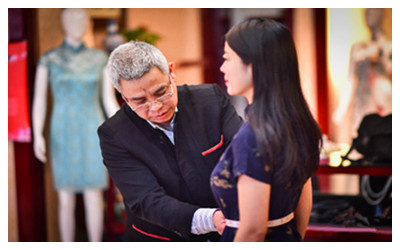 Tailors and clothes
Tailors and clothes are extremely cheap in China, but make sure you know what you are getting yourself into. Only get clothes made if you know what fabric you want, and have either an example of what you want copied, or have a solid idea in your head that you can draw out. If you want silk clothes, check out this article first on how to tell if silk is good quality. Many people choose to have their prom dress, or a ball gown, made while in China because it is so much cheaper than having a dress tailor-made at home. This is an especially good souvenir if you go for a Chinese-style qipao dress. Let us know if you want to have something tailored and we can help arrange this for you.
China Silk Road Tours

 Chinese people invented and produced largely silk articles and made the first East-West trade exchange of silk, called “silk road” in history. Since Han Dynasty, Chinese silk was constantly shipped abroad in large numbers. It is well-known as one part of Chinese culture.
Chinese people invented and produced largely silk articles and made the first East-West trade exchange of silk, called “silk road” in history. Since Han Dynasty, Chinese silk was constantly shipped abroad in large numbers. It is well-known as one part of Chinese culture. Along with the economic development of Qin and Han Dynasties, silk production reached a peak. The varieties of silk are divided into tought silk, damask and brocade. The emergence of brocade is an important milestone in the history of Chinese silk.
Along with the economic development of Qin and Han Dynasties, silk production reached a peak. The varieties of silk are divided into tought silk, damask and brocade. The emergence of brocade is an important milestone in the history of Chinese silk. Huzhou city, Zhejiang province is the real hometown of silk which has been forgotten. Huzhou silk has a long history which can be traced back to 4,700 ago. In 1958, a number of thread and no carbonous tough silk were unearthed in southern suburb of Huzhou, which were proved to be the earliest silk textile with a history of over 4,700 years. The discovery made Huzhou as the oldest god of longevity of silk in the world.
Huzhou city, Zhejiang province is the real hometown of silk which has been forgotten. Huzhou silk has a long history which can be traced back to 4,700 ago. In 1958, a number of thread and no carbonous tough silk were unearthed in southern suburb of Huzhou, which were proved to be the earliest silk textile with a history of over 4,700 years. The discovery made Huzhou as the oldest god of longevity of silk in the world. Huzhou is the earliest birthplace of silk and the oldest starting point of Silk Road. From ancient times, silk has become the important source of subsistence and the local pillar of the economy. In 2010 Shanghai World Expo, 60 silk national treasure such as the bilingual version Tao Te Ching made from silk, silk textile Dwelling in the Fuchun Mountains, etc. took foreigners’ breath away in astonishment.
Huzhou is the earliest birthplace of silk and the oldest starting point of Silk Road. From ancient times, silk has become the important source of subsistence and the local pillar of the economy. In 2010 Shanghai World Expo, 60 silk national treasure such as the bilingual version Tao Te Ching made from silk, silk textile Dwelling in the Fuchun Mountains, etc. took foreigners’ breath away in astonishment. Suzhou Silk
Suzhou Silk Tailors and clothes are extremely cheap in China, but make sure you know what you are getting yourself into. Only get clothes made if you know what fabric you want, and have either an example of what you want copied, or have a solid idea in your head that you can draw out. If you want silk clothes, check out this article first on how to tell if silk is good quality. Many people choose to have their prom dress, or a ball gown, made while in China because it is so much cheaper than having a dress tailor-made at home. This is an especially good souvenir if you go for a Chinese-style qipao dress. Let us know if you want to have something tailored and we can help arrange this for you.
Tailors and clothes are extremely cheap in China, but make sure you know what you are getting yourself into. Only get clothes made if you know what fabric you want, and have either an example of what you want copied, or have a solid idea in your head that you can draw out. If you want silk clothes, check out this article first on how to tell if silk is good quality. Many people choose to have their prom dress, or a ball gown, made while in China because it is so much cheaper than having a dress tailor-made at home. This is an especially good souvenir if you go for a Chinese-style qipao dress. Let us know if you want to have something tailored and we can help arrange this for you. Ask Questions ?
Ask Questions ?